|

by Ellen Lloyd
October 24,
2017
from
AncientPages Website
Spanish version
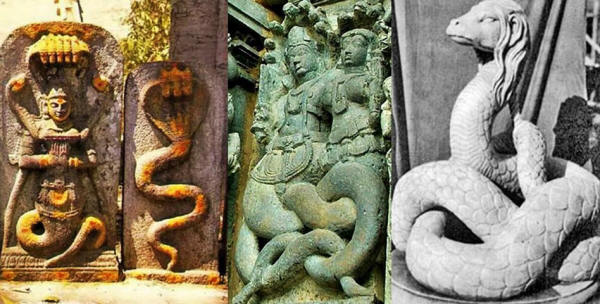
Nagas play an important role
in Hindu mythology, but these beings
are known world-wide
under different names.
Hindu mythology is full of fascinating stories about incredible
gods, goddesses, astonishing creatures, remarkable places, unusual
objects and powerful technology that can be used for good or bad
purposes.
The
mysterious Nagas are some of the
most intriguing beings we encounter in Hindu myths and legends.
Known as
the
Serpent People they are said to live in two magnificent
underground cities known as Patala and Bhogavati.
Ancient legends of Serpent People
can be found in all corners of the world.
Present in various parts
of the globe as,
-
the "Nagas"
("snakes") in India
-
Amaru of South
America
-
the Quetzalcoatls
("Plumed Serpents") in Mexico
-
the Djedhi
("snakes") in Egypt
-
the Lung
("dragons") in China
-
the Adders
("snakes") in Britain,
...the Serpents of Wisdom
were welcomed by the indigenous people and worshipped as "Serpent
prophets".
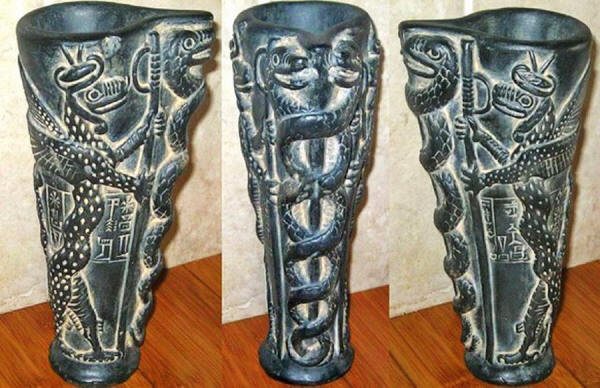
The "libation vase o
The
double helix depicts the deity.
Legends say that these remarkable, intelligent people - who could
take either human or reptilian shape at will - created
underground cities worldwide.
However, they have continued to make appearances to humankind on
occasions.
Under the guidance of the serpent people,
"numerous 'Dragon
Cultures', which were comprised of colossal pyramids,
multitudinous serpent motifs, and ruled over the
Dragon Kings, eventually came
into existence."
The Nagas Live In Secret Underground Kingdoms
The word Naga comes from the Sanskrit, and nag is the word
for snake, especially the cobra.
Patala and
Bhogavati, the underground kingdoms
of the Nagas are well-hidden and impossible to find.
Many people in India believe that there is an entrance in the
entrance in the
Well of Sheshna, in Benares leading
to the mysterious Patala kingdom.
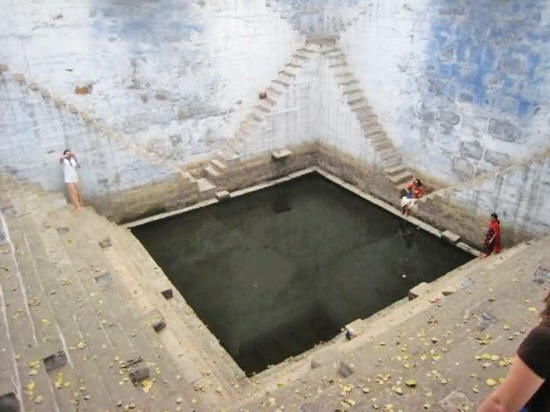
Well of Sheshna, in Benares.
Image credit: David Icke Forum
According to herpetologist and author Sherman A. Minton, as
stated in his book "Venomous
Reptiles," this entrance is very real, with forty steps
which descend into a circular depression, to terminate at a closed
stone door which is covered in bas-relief cobras.
In Tibet, there is a major mystical shrine also called "Patala,"
which is said by the people there to sit atop an ancient cavern and
tunnel system, which reaches throughout the Asian continent and
possibly beyond.
The Nagas are associated with water and that's why many think secret
entrances to their underground realms are at the bottom of wells,
deep lakes, and rivers.
The Nagas Are
a Very Advanced Race
Ancient myths and legends tell that the Nagas are a very advanced
species that has access to incredibly sophisticated technology.
Vedic literature delivers
plenty of descriptions of flying machines
called Vimanas that soared the
skies. They possess magical stones and a third eye in the middle of
their brows.

It is said that 30 feet down at the bottom,
is a door that leads to another world,
the world of the Naga,
the reptile-like semi-divine beings
who live below the Earth.
Image credit: David Icke Forum
Esoteric students consider the third eye to be a gateway to to inner
realms and spaces of higher consciousness.
In New Age spirituality,
the third eye often symbolizes a state of enlightenment or the
evocation of mental images having deeply personal spiritual or
psychological significance.
The Nagas never showed themselves to the outsiders, but they are
believed to be related to another underworld race, the Hindu demons,
or
Rakshasas.
The Story of The
Serpent People
...and Their Guidance
by A.
Sutherland
May 07, 2014
from
AncientPages Website
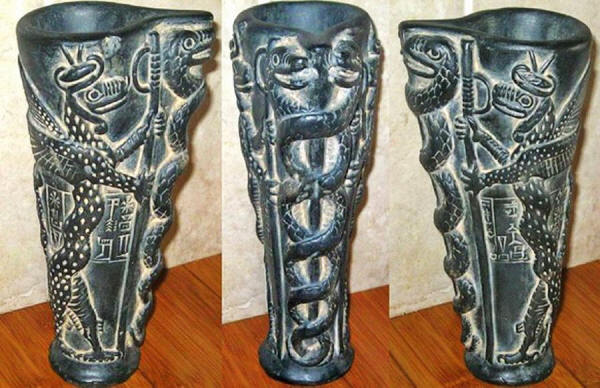
The "libation vase of Gudea",
dedicated to Ningishzida (21st century BC).
The
double helix depicts the deity.
'Be Wise as Serpents
and Harmless as Doves'
They have been known from time immemorial, as the Serpent People, or
People of the Serpent.
Collectively, they are all known as the Serpents of Wisdom and their
great contribution to the global development of our planet can never
be erased.
Present in various parts of the globe as,
-
the "Nagas"
("snakes") in India
-
Amaru of South
America
-
the Quetzalcoatls
("Plumed Serpents") in Mexico
-
the Djedhi
("snakes") in Egypt
-
the Lung
("dragons") in China
-
the Adders
("snakes") in Britain,
...the Serpents of Wisdom
were welcomed by the indigenous people and worshipped as "Serpent
prophets".
Legends say that these remarkable, intelligent people - who could
take either human or reptilian shape at will - created underground
cities worldwide.
However, they have continued to make appearances to humankind on
occasions.
Under the guidance of the serpent people,
"numerous 'Dragon
Cultures', which were comprised of colossal pyramids,
multitudinous serpent motifs, and ruled over the Dragon Kings,
eventually came into existence."
"The descendants of the first Serpents of Wisdom in Mesoamerica
and the administrators of the Middle American Dragon Culture
they founded were the Quetzalcoatls and Kukulcans…
These Plumed Serpents
served in the roles of priest kings, spiritual teachers, and
culture bearers to the Middle American people…"
M.A.
Pinkham
The
Return of The Serpents of Wisdom
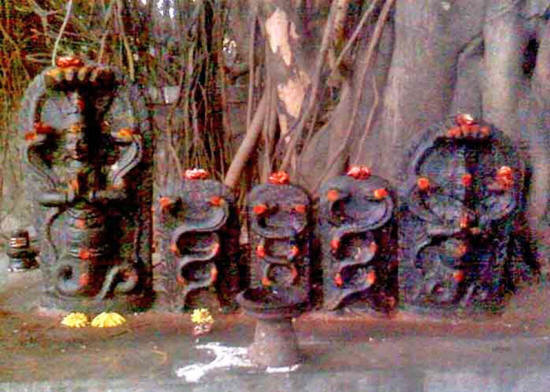
Nagas, Snakes in Hinduism
The Dragon Cultures have survived for many thousands of years
and many legends speak of them.
Colonel A. Braghine wrote in "The
Shadow of Atlantis":
"The source of light,
the sun, was often symbolized by the Toltecs, Maya and Aztecs in
the image of a more or less conventionalized feathered serpent,
Quetzalcoatl and Kukulcan, the enlighteners of Central America,
were also often symbolized with winged serpents…"
The serpent became the
symbol of many ideas and concepts and depictions of it are common in
a glorious city of Teotihuacan (City of the Plumed Serpent) in
Mexico, where the ancient Maya worshipped Kulkulcan, their Serpent
god that could fly.
The serpent god Quetzalcoatl was worshipped by the Aztecs; he lived
with the Indians 52 years and was their teacher, according to the
book of legends "Codex
Chimalpopoca".
"And so greatly did
they believe in their priest Quatzalcoatl and so greatly
obedient and given to the things of their god were they and so
fearful of god all believed in Quetzalcoatl when he left Tula…"
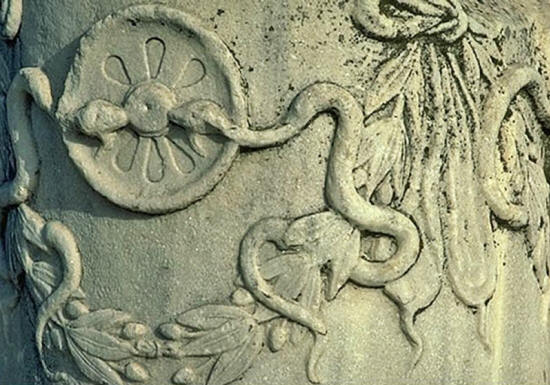
Sacred Snakes of Pergamum
(Bergama, Turkey)
The benevolent serpent-god
Quetzalcoatl is the plumed serpent-god who brought the
benefits for the Mexican civilization and taught the science of
mathematics and astronomy to man.
Sick people used to visit Quetzalcoatl because he could cure
blindness, skin diseases and eye ailment.
He learned humans useful arts and commanded them to love and respect
each other and dismiss violence. The Toltecs were raising great
temples in honor for their White God, who inspired them.
People of Mesoamerica believe Quetzalcoatl, the serpent god, will
return again to rule all the planets.
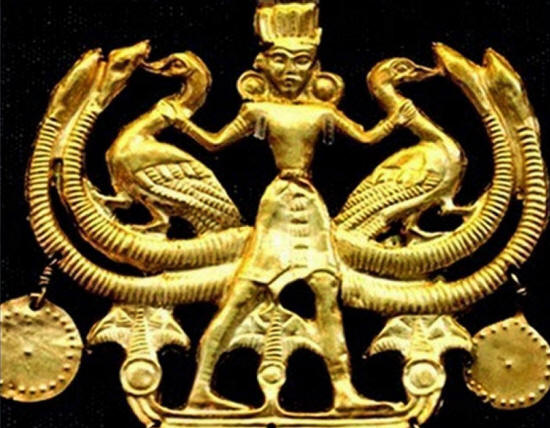
Artifact from ancient Crete,
Horus'
mother Hathor
appears
between serpents and geese.
The Sumerian tradition presents the Serpent People as beings of
power and knowledge and in North America; serpents are deep-rooted
in the native Indian cultures.
The serpent symbol
dominates the art of the Hohokam Indians. Their site is the famous
Snaketown, Arizona, dating from 400
BC to 1200 AD.
The native voodoo people of Haiti believe in a god Damballah Wedo
and his image of the serpent. Damballah Wedo is the Great
Serpent, the Creator of the Universe, Heavens and Earth.
As a voodoo Flood
tradition says, the Serpent let go the waters upon the Earth, the
Rainbow arose and the Serpent took the rainbow, named Ayida Wedo,
as his wife.
"In Pueblo culture,
snakes and serpents play important roles in religious ceremonies
and imagery. Horned and plumed serpents are said to live in
water sources such as springs and streams…
The famous
Hopi snake ceremony is held in
late summer and in New Mexico, priests in charge of Santa Ana
Pueblo's irrigation ditches make offerings to water serpents…"
Jim
Griffith, 2002
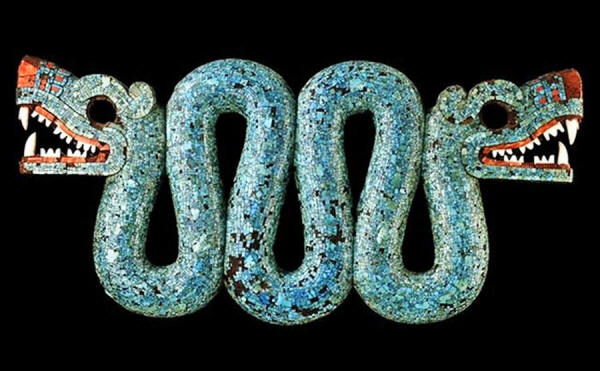
Double-headed Serpent Carving
Aztec,
ca. 1500 AD, wood, turquoise, spondylus, and conch
In Australia, the aboriginal people have preserved many legends of
the serpent in their "Dreamtime" myths of the creation of our
planet.
The country's ancient drawings depict the Rainbow Serpent, a creator
of mountains, rivers and people while traveling from the north
coast. Serpents were worshipped by the
Lemurians
and
Atlanteans.
In Hindu mythology, we find a certain group of gods - flying beings
- called
the "Nagas".
The term Naga means
literally "Serpent", and these unusual creatures were serpent gods
who lived somewhere deep underground in the Himalayan Mountains.
The Nagas were flying beings, who were able to travel long distances
across the skies.
These serpent gods were
known for their magnificent, shining palaces. Their underground city
was called Bhogawati and its lord and ruler was the King of the
Nagas, Vasuki.
Ancient Sanskrit texts
say the Nagas worked together with other gods and their main task
was to guard the water and the clouds. The texts also say the the
city was illuminated by bright diamonds.
Was it a cosmic city a
spaceport for the ancient gods' flying machines?
The Naga stands for one who is wise, the serpent is a symbol of
divine wisdom and it can also lead us, as used by the Christ
in the gospel, according to Saint Matthew 10:16
"Behold, I send you
forth as sheep in the midst of wolves: be ye therefore wise as
serpents, and harmless as doves."
|










